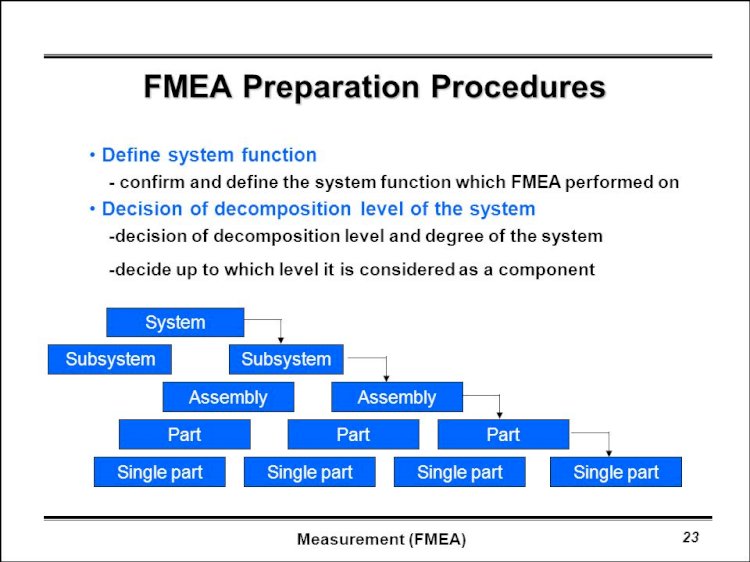How is a FMEA prepared?
How is a FMEA prepared?

How is a FMEA prepared?
FMEA is a great weapon in the arsenal of an organization when its quality strategy is being formulated. It helps the organization to identify the potential defects that may occur and pushes it to formulate a strategy to formulate ways to eliminate these defects or minimize their occurrence. Apart from this, it also helps the organization in fulfilling its obligation under the CAPA (Corrective and Preventive Action), as mandated by the ISO standards.
FMEA takes into account the severity of a potential failure, the possibility of its occurrence and its detection. All the three factors – Severity, Occurrence and Detection are given ratings on a scale of 1 to 10. The ratings are then multiplied (Severity * Occurrence * Detection) which gives the result called as RPN (Risk Priority Number). The potential failures are then given ranking based on their RPN, with the most critical failure modes getting the highest ranking. This helps in prioritizing the factors for subsequent action to eliminate or reduce the potential of these failure modes. FMEA is generally prepared by a cross-functional team in a joint meeting having representation from all the stakeholders involved in the process are present so that each and every failure mode is analyzed properly.
Let us understand this with an example. A new car model is being designed by a car manufacturing company. FMEA for the Air Bag System of the new car is being prepared.
FMEA
1. In Step 1, name of the process “Air Bag System” is entered
2. In the second step, Potential Failure Mode is mentioned where Air Bag fails to inflate
3. The Potential effects of the failure are mentioned here
4. In Severity, rating is given on a scale of 1 to 10 about the seriousness of this failure
5. The potential causes of this failure are mentioned here
6. In Occurrence, rating is given on a scale of 10 to 10 about the frequency with which this failure might occur
7. Existing control method is mentioned here to control this failure
8. In Detection, again a rating on a scale of 1 to 10 is given about how this failure can be detected.
9. Lastly, RPN is calculated by multiplying the Severity, Occurrence and Detection.
Conclusion:Based on the RPN value, the organization takes action on which failure mode has to be controlled first. IN the above case, the likely impact of the failure of The Air Bag System may severely injure or even kill the passenger in case of accident. Above all, the company might face legal action from both the government and the family of the passenger for this. As a result, not only the company may be penalized but will also have to suffer a loss of reputation among customers which may threaten its very survival in the market.

 Pankaj Kumar
Pankaj Kumar 
































Comments (0)
Facebook Comments